Due to Hawaii’s isolation in the middle of the Pacific, far away from other land masses, we have wildlife found nowhere else in the world. Maui has also been able to avoid most land-based predators and snakes.
Some Wildlife You Might See While Visiting Maui:
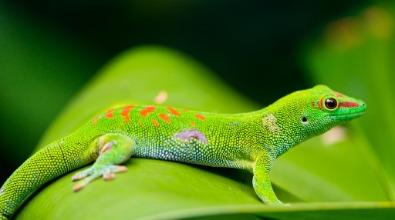
Gecko. If you see a cute little lizard in your condo, don’t be afraid. These are called geckos and they are not only harmless, they provide a valuable service. They eat insects like termites, ants, mosquitoes, and cockroaches. Cleaning up a little Gecko poop is worth them being our natural exterminators.
Nine species are found in Hawaii, ranging from a translucent tan or red to green and blue, with fat suction-like “toes” that allow them to climb walls and stick to ceilings. Geckos make a distinctive chirping sound, and some species have the ability to detach their tail as a defense mechanism.
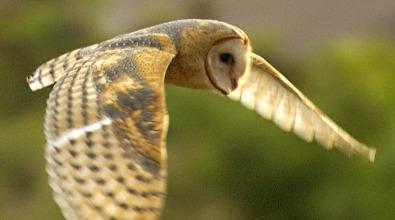
Pueo (Hawaiian Owl). The beautiful Pueo is a short-eared endemic owl, with a long history and strong ties to Hawaiian culture. Pueo nest on the ground, and are typically found in wetlands, grasslands and dry forest. Unlike most owls, Pueo is active during the day, though can also be spotted at night.
The bird is believed to have inhabited the islands even before Polynesian voyagers. Pueo is considered culturally as amukua (deified ancestor), along with sharks, turtles and centipedes, and is recognized as the oldest spirit in Hawaiian history.
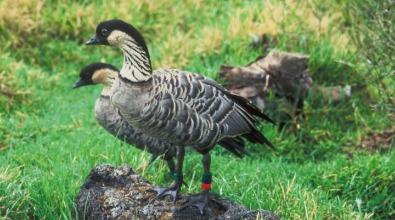
The Nene Goose (pronounced “NAY-nay”) is endemic to Hawaii and is only found on Maui, Kauai and the Big Island. This stately bird stands approximately two feet tall, is a vegetarian. Nene’s make a honking noise. Their feet evolved from being webbed to having claws to grip surfaces like lava rock.
You can spot Nene in grassy areas like golf courses and at the summit of Haleakala, often in pairs as they mate for life. Once near extinction, populations have rebounded due to their status as a protected species.

Mongoose. You likely will run across a small weasel-like animal darting across a road during your visit. The mongooses found in Hawai’i are native to India and were originally introduced to Hawai’i Island in 1883 by the sugar industry to control rats in sugarcane fields on Maui, Moloka’i and O’ahu.
Unfortunately, rats are nocturnal and mongoose are not, so the two species rarely cross paths. Mongoose turned their feeding attention to much tastier bird populations. Considered a prolific invasive species, they prey on the eggs and hatchlings of native ground nesting birds and endangered sea turtles.

Green Sea Turtle. Many visitors are enamored by green sea turtles, or honu (pronounced HOH NOO) in Hawaiian. They can frequently be seen swimming near the coves of Maui and resting on beaches. Found in many tropical climates, Hawaii hono are genetically distinct from all others.
Honu are a threatened species under the U.S. Endangered Species Act, and conservation efforts have thankfully resulted in a steady population increase over the last three decades. An adult green sea turtle can weigh from 300 to 500 pounds and live 60 to 70 years. Please keep a peaceful distance of 6 to 8 feet when viewing a hono on land or sea.
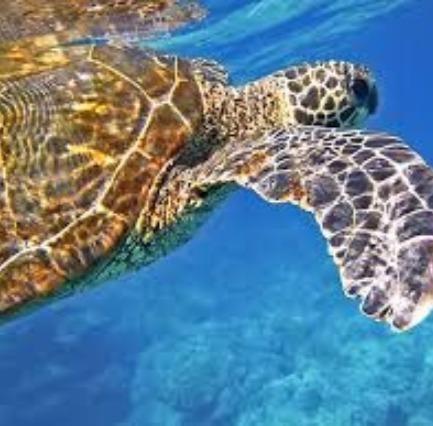
Hono: A Protected Species
Protected (both dead and alive) by Federal and State laws, there are stiff penalties for touching, riding or otherwise harassing hono. Click the link to see who to contact if you see a turtle that appears injured or is being harassed by someone, or check out our Protect Our Ocean page.
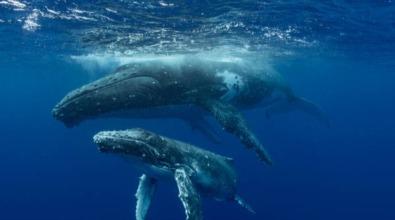
Every winter, around 10,000 North Pacific Humpback Whales migrate from Alaska to bask in the warm seas of the Hawaiian islands, give birth and nurse their young. Maui is the most popular destination for these gentle giants, seen most frequently off the calmer South, Central and West coasts.
Some behaviors you might observe are breaching, pectoral slapping, spy hopping, fluke up diving and tail slapping. Maui Ocean Center aquarium or a whale watch boat tour with a naturalist are two ways to learn more about the humpback whale.
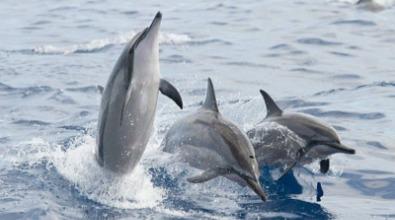
Spinner Dolphins. Called Nai’a in Hawaiian, we love sharing our warm tropical waters with these friendly and playful animals. Hawaii's spinner dolphins are a unique sub-species, with a dark grey back, light grey sides and a light underbelly. They can often be spotted early in the morning off LaPerouse bay.
Spinner Dolphins can also be spotted in the channel where they feed and play. If you are lucky, you may see them tagging along with humpack whales while on a boat charter, or surfing the wave in front of a boat underway.
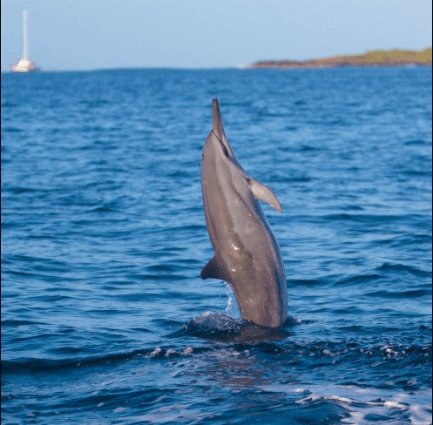
Cetacean Display Ban
You will not see live dolphins or whales in captivity on Maui. Not only did the Maui County Council ban the display of cetaceans (dolphins and whales) in captivity in 2002, over 15,000 citizens signed a petition in support of the ban. Organizations such as the Maui Ocean Center aquarium and Pacific Whale Foundation, also supported the ban. Cetaceans are highly sensitive marine mammals that are better observed in their natural environment.
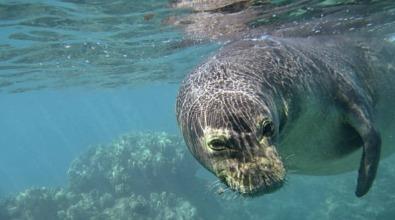
Hawaiian Monk Seal. Found only in Hawaii, the monk seal species is believed to date back 13 million years. These inquisitive and gentle creatures can occasionally be found basking on the beach or swimming among snorkelers and divers. The monk seal is the official state mammal.
Monk seals are highly endangered due to habitat loss, human harassment, disease, shark predation, marine debris and food shortages. Of about 1400 monk seals in the Hawaiian chain, only about 300 are in the main Hawaiian islands. As of 2010, it is a felony to harm a Hawaiian monk seal.
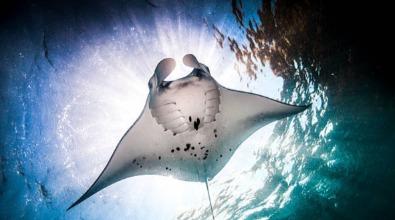
Manta Rays. Looking a bit like the Starship Enterprise when seen underwater, graceful Manta rays can grow up to 30 feet wide. Often spotted by snorkelers at Olowalu or on snorkeling charters, Manta’s also are observed at underwater “cleaning stations” where smaller fish help remove dead tissue and parasites.
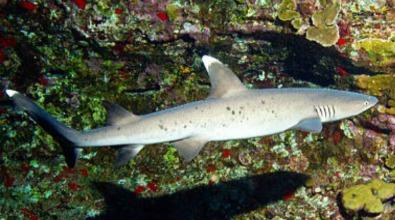
Sharks. Called Mano in Hawaiian, sharks are strongly intertwined with Hawaiian culture, regarded as amukua, or family protectors. There are 40 species of shark found in Hawaii waters. Near shore, benign white tip and black tip reef sharks are common. Shark attacks are rare- usually a case of mistaken identity.
For those wishing to stay away from sharks, avoid going in the ocean where water is murky, stay away from areas where there is water runoff into the ocean, and avoid swimming near fishing boats.
Destination Maui Vacations
Administrative Office:
380 Huku Li’i Place, Suite 102
Kihei, HI 96753
808-879-0080
Copyright © 2025 Destination Maui Vacations. All Rights Reserved.







